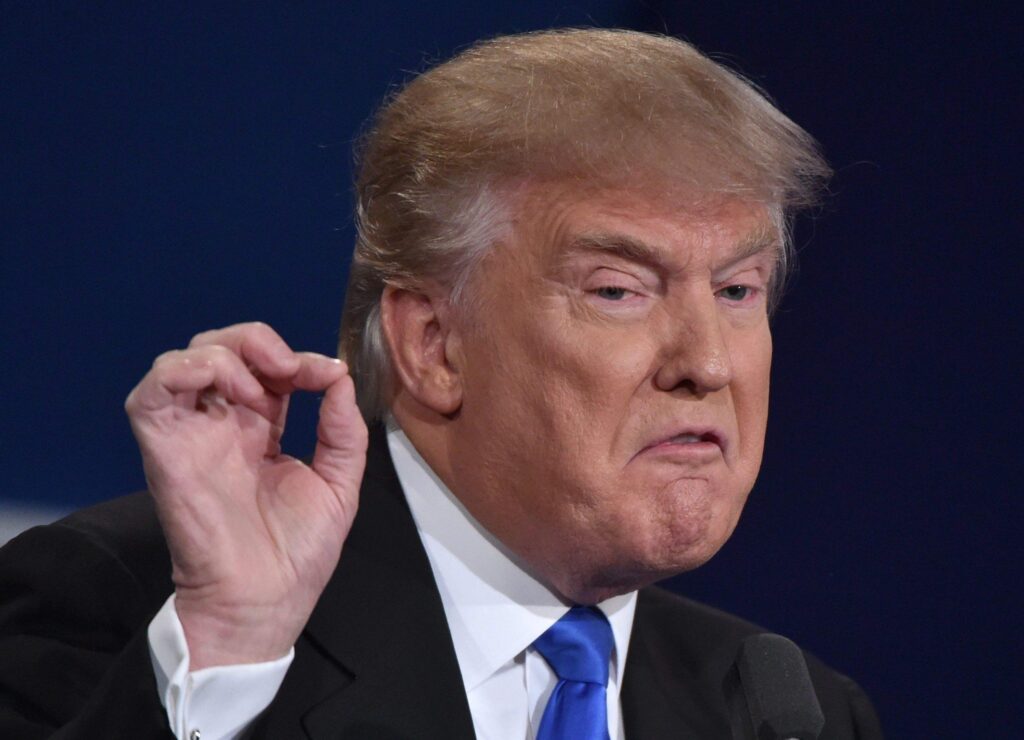In a dramatic escalation that could send shockwaves through global markets and international alliances, U.S. President Donald Trump has announced a sweeping 25% tariff on all imports from Japan and South Korea, citing “unfair trade practices,” “chronic trade imbalances,” and “decades of American weakness.”

The announcement came late Tuesday night during a fiery press conference in Florida, just days after Trump delivered a scathing rebuke of long-time U.S. allies during a campaign-style rally. “We have been protecting countries that rob us blind. No more,” he declared. “Japan, South Korea — great nations, great people — but their governments have taken advantage of American generosity for too long.”
Coming from any other president, this would’ve been unthinkable. But from Trump — who has always treated allies and rivals alike in his hardball brand of international politics — this is a direct signal that no one is immune from his “America First” trade doctrine.
Why Japan and South Korea?
Trump’s choice of targets is baffling to many at first glance. Japan and South Korea aren’t adversaries — they’re two of America’s closest security and economic partners in Asia. Both host tens of thousands of U.S. troops, buy billions in American weapons, and serve as counterweights to rising Chinese influence in the region.
So why them?Trump framed it in economic terms. “These are rich countries,” he said. “They sell us cars, electronics, ships, steel. We get the trade deficits. We pay for their defense. It’s a bad deal, folks. They need us more than we need them.”
Indeed, the U.S. runs trade deficits of roughly $67 billion with Japan and $28 billion with South Korea. But economists argue that deficits are not necessarily bad and reflect consumer demand and investment flows — not manipulation.
Yet for Trump, the issue is not just numbers. It’s symbolic. His team claims these nations have benefited disproportionately from global trade rules and American military protection, all while imposing their own barriers — especially in the auto and tech sectors.
What’s Included in the 25% Tariff?According to the White House trade memorandum released shortly after the announcement, the 25% tariff will apply to:All passenger and commercial vehiclesConsumer electronics like TVs, smartphones, semiconductors, and batteriesSteel, aluminum, and shipbuilding materialsPharmaceuticals and medical devicesLuxury goods and cosmeticsIn short: nearly everything that Japan and South Korea export to the U.S. is now about to get 25% more expensive — unless a deal is made to reverse it.—Economic Fallout: U.S. Consumers in the CrosshairsAmerican consumers are likely to feel the impact of this decision almost immediately. Consider this:Toyota, Honda, and Hyundai vehicles may jump in price by thousands of dollarsSamsung and LG electronics — TVs, refrigerators, phones — could see double-digit price hikesTech firms relying on Korean and Japanese semiconductors may pass higher costs onto consumersSupply chains in medicine, auto parts, and construction will face major disruption“It’s essentially a tax on the American middle class,” said Paul Krugman, Nobel Prize-winning economist. “These tariffs will increase prices, stoke inflation, and potentially trigger retaliation that could cripple American exports.”—Allies Blindsided — “A Punch in the Gut”Tokyo and Seoul were reportedly not given prior notice, according to local news outlets. The reactions have ranged from stunned silence to outright fury.Japanese Prime Minister Fumio Kishida, speaking to reporters outside the National Diet, said, “This is not how allies behave. Japan has always worked in good faith with the United States. We will consider all options in response.”South Korea’s President Yoon Suk-yeol was even more blunt: “We are extremely disappointed. We consider this action hostile and unwarranted. Trade should not be used as a weapon against partners who share democratic values and regional security goals.”Multiple diplomats have said off-record that the move could “irreversibly damage” U.S.-Asia relations, especially at a time when China is asserting dominance in the Indo-Pacific.—Geopolitical Risks: A Gift to China?From a strategic standpoint, Trump’s tariff blitz may have just handed Beijing a golden opportunity.China has long sought to drive a wedge between the U.S. and its Asian allies. If Tokyo and Seoul feel abandoned or mistreated by Washington, they may be more willing to engage with Beijing-led trade and security frameworks like RCEP or even the China-backed BRICS expansion.“This move plays directly into Xi Jinping’s hands,” warned Michael Green, former White House Asia advisor. “It makes America look unreliable. It creates resentment among allies. It’s not just bad economics — it’s bad geopolitics.”The tariffs also come at a time when both Japan and South Korea were being courted to deepen semiconductor cooperation with the U.S. to reduce dependence on China. That plan may now be dead in the water.—Is This Just Trump Being Trump?Some analysts caution that this may be more bark than bite — especially given that Trump is still campaigning and not yet in full executive control. This could be part of a broader negotiation tactic or political theater meant to energize his voter base.“Trump loves to startle markets, rattle cages, and then offer a deal later,” said Susan Rice, former National Security Advisor. “He might walk this back in exchange for new defense spending or market concessions.”But others point out that Trump has a history of following through on these promises — from NAFTA renegotiation to China tariffs — even when everyone expected him to back down.So the world is watching carefully.—U.S. Businesses: “Caught in the Crossfire”Corporate America is already ringing alarm bells. Auto manufacturers, tech firms, and retailers are among the most exposed.“Frankly, this came out of nowhere,” said an executive from General Motors, speaking on condition of anonymity. “We’ve spent years building joint ventures with Japanese and Korean firms. Disrupting those supply chains could cost billions.”Retailers like Best Buy and Walmart have also expressed concern, as higher import costs may force them to raise prices or eat into margins. Meanwhile, pharmaceutical companies warned of possible shortages in essential drugs sourced from Korean labs.The U.S. Chamber of Commerce has called the tariffs “reckless and counterproductive.”—Retaliation Looms LargeBoth Japan and South Korea have powerful economic weapons of their own — and they may not hesitate to use them.Japan could restrict exports of rare earth elements critical to American techSouth Korea could impose tariffs on American agricultural importsBoth nations could delay or cancel defense contracts with American firmsFuture military cooperation could become more transactional and strained“We are reviewing all diplomatic and economic options,” a senior Japanese trade official said in Tokyo. “The U.S. must understand — actions have consequences.”—The Bigger Picture — Are Alliances Dead?Trump has long expressed skepticism of traditional alliances like NATO, the UN, and even bilateral defense pacts. By going after Japan and South Korea — pillars of the U.S. alliance structure in Asia — he’s sending a loud message: economic nationalism comes before strategic friendship.And it’s not just rhetoric. Trump has previously questioned why the U.S. defends South Korea at all costs, once suggesting Seoul should “pay for protection like in any business deal.”Critics fear that if Trump wins another term, alliances based on shared values may be replaced with “pay-to-play” arrangements where everything — from troop presence to trade deals — comes with a price tag.—What Happens Now?The tariffs are set to take effect within 30 days, unless a last-minute agreement is reached. Both Japan and South Korea are expected to send delegations to Washington in the coming weeks to negotiate terms.But given Trump’s style, resolution may not come quickly.Markets are bracing for turbulence. Asian stock indexes dipped sharply, while U.S. futures showed volatility overnight. The Japanese yen and Korean won both weakened against the dollar as investors processed the news.For now, the world holds its breath.—Final ThoughtsThis isn’t just a story about trade or taxes. It’s a story about trust, alliances, and the future of global leadership.By targeting Japan and South Korea — nations that have stood by the U.S. through war, economic crises, and decades of diplomatic challenges — Trump has crossed a line that few expected.Whether this leads to better trade deals or blows up decades of diplomacy remains to be seen. But one thing is certain: the era of quiet cooperation is over. Under Trump, even allies must pay — or face the consequences.—SEO Keywords: Trump Japan South Korea tariff 2025, 25% tariff on Japan, Trump trade war Asia, US-Korea trade war 2025, Japan South Korea US alliance crisis, Trump vs Japan Korea economy, Asian market reaction tariff, Trump America First 2.0, U.S. global alliances collapse, de-dollarization Asia reaction
